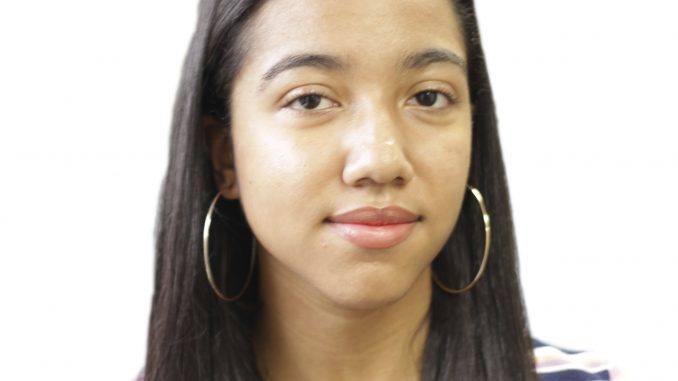
 As someone who is of Latino heritage, I rarely see characters I can relate to on screen. But with Netflix’s new show “The Get Down,” I found myself connected to one of the main characters named Mylene Cruz. Her Puerto Rican heritage and her uncle’s pride in their culture reminded me of myself and my own family.
As someone who is of Latino heritage, I rarely see characters I can relate to on screen. But with Netflix’s new show “The Get Down,” I found myself connected to one of the main characters named Mylene Cruz. Her Puerto Rican heritage and her uncle’s pride in their culture reminded me of myself and my own family.
This type of connection is rare for me to form with characters though. Often, other shows don’t include people who look like me or speak the same languages as me or even have some of the same experiences that I do. And this often makes me feel like an outsider.
According to a study conducted at the University of Southern California earlier this year, only 5.8 percent of characters in both television shows and film were Hispanic, despite the U.S. population of Hispanics being nearly 20 percent.
“The Get Down” is different, though. The show, which depicts the birth of hip-hop during the late 1970s in the Bronx, has a cast in which all the main characters are African-American or Latino.
More shows should follow suit and work to include casts that are as diverse as people are in real life so that everyone can see themselves represented in some way on their favorite shows.

Stefanée Martin, a Temple theater alumna who graduated in 2012, plays Yolanda Kipling on “The Get Down.” She said the diversity of the cast on the show differs from how many other shows categorize diversity.
“It’s really a mix of different ethnicities,” she said. “Plus, there are white characters. There’s much of a mix.”
“I think that’s a huge difference,” she added. “Even the ‘diversity’ on television or major shows are like, ‘Oh, we’ll have a Black character’ or ‘This is a Black show with all Black people.’ That’s kind of what we’re calling diversity.”
Martin believes having characters of all backgrounds on screen is crucial for viewers, especially for communities that are often left out.
“It’s very easy for a certain group of people to be invisible,” Martin said. “‘The Get Down’ is important because it reminds people that these people exist in the world — Black people, Puerto Rican people, Latino people, young people.”
Clearly, representation on screen has some catching up to do with reality. But when people of color do end up on shows, sometimes their portrayals are problematic, as well.
Stereotypical roles for people of color, like housekeepers, gang members and drug dealers can paint whole communities in a negative light. And at other times, people of color are only used as comic relief or to act as a support for the main, white character.
“Latinos are usually portrayed as minor characters with heavy accents, and the focus is mostly on sex appeal,” said Karla Duran, a senior finance major and the president of Temple’s Asociacion de Estudiantes Latinos. “This most definitely affects the public’s view of us because it contributes to the isolation, discrimination and over-sexualization of our culture.”
“The Get Down,” however, veers away from stereotypes and instead highlights the importance of well-developed friendships among young people of color.
“Growing up, you see your friends or see yourself as invincible when you’re at a certain age, which is so refreshing,” Martin said. “It’s so pure and innocent.”
Udochi Ekwerike, a sophomore film major, believes representation especially matters for youth needing role models.
“The Lizzie McGuires and Sabrina the Teenage Witches of the world were so much fun to watch, but they also were a main source of my insecurities of the color of my skin and my kinky coily hair growing up,” Ekwerike said. “I feel like if I had a character to look up to besides the lone Raven Baxter, maybe I could’ve skipped out on the feeling of not feeling enough.”
I remember how I felt growing up and noticing a lack of Latina actresses on TV to look up to and admire, and I don’t want any other children to feel that way. It’s not fair for people of color at any age to feel left out when looking for entertainment.
Hopefully, with more and more shows like “The Get Down,” people of color will more often see themselves in the characters they watch on screen. And in turn, TV and Netflix shows will better represent communities as they truly exist in reality.
Siani Colon can be reached at scolon@temple.edu.



Be the first to comment